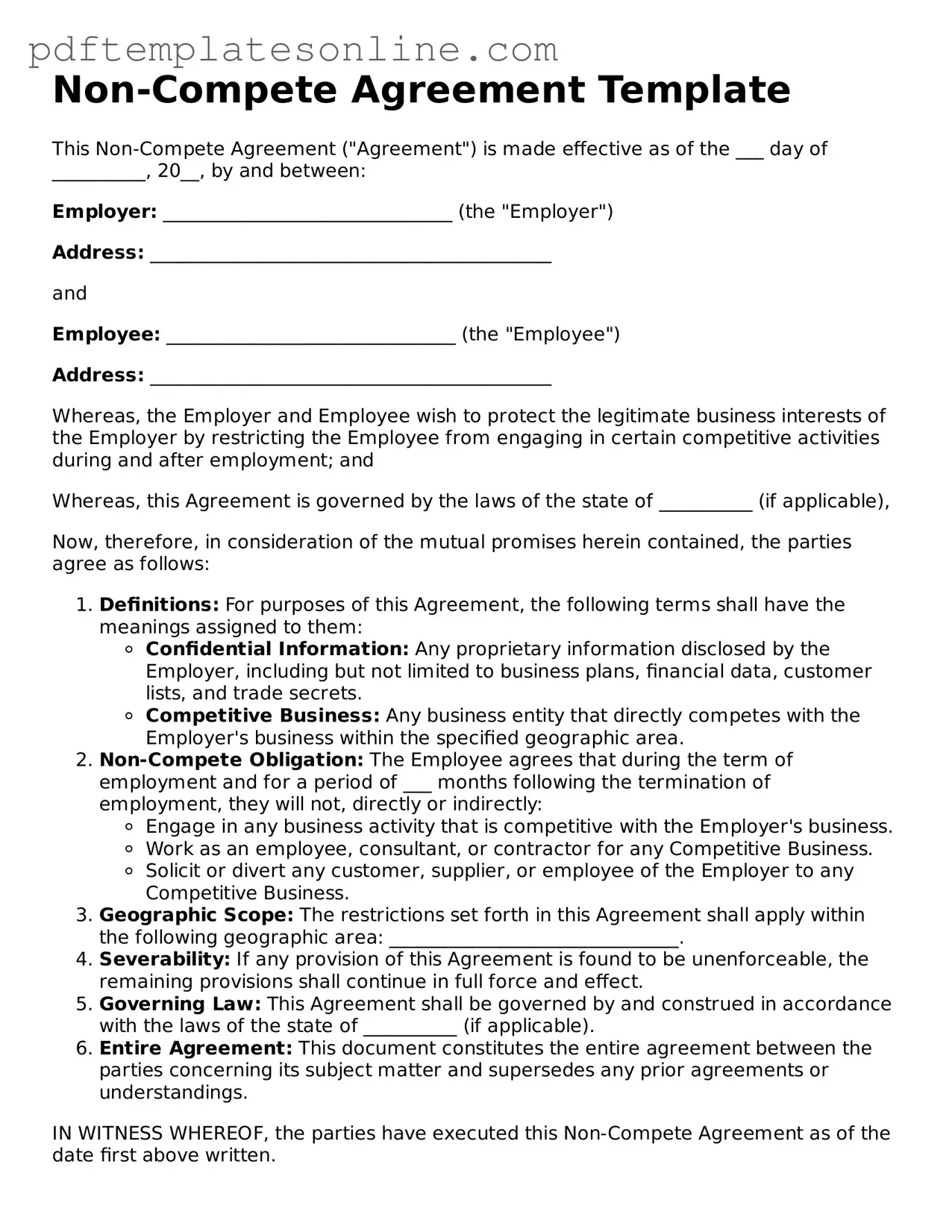When filling out a Non-compete Agreement form, individuals often overlook critical details that can lead to misunderstandings or legal complications. One common mistake is failing to read the entire document thoroughly. Skimming through the agreement may result in missing important clauses that define the scope of the non-compete, including the duration and geographical limitations.
Another frequent error is not providing accurate information regarding job titles or roles. It is essential to clearly specify the position held or the nature of the business to ensure that the agreement is relevant and enforceable. Ambiguity in this section can create loopholes that might be exploited later.
People sometimes underestimate the importance of understanding the terms of the agreement. Signing without fully grasping the implications can lead to unintended consequences. It is advisable to seek clarification on any terms that seem vague or overly complex. A clear understanding can prevent future disputes.
In addition, individuals may neglect to consider the duration of the non-compete clause. Some agreements impose restrictions for an extended period, which can significantly impact future employment opportunities. Evaluating whether the time frame is reasonable and justifiable is crucial before signing.
Another mistake involves failing to negotiate the terms. Many individuals assume that the agreement is non-negotiable, but this is not always the case. Engaging in discussions about the terms can lead to a more balanced agreement that protects both parties' interests.
People often overlook the necessity of keeping a copy of the signed agreement. After signing, individuals should retain a copy for their records. This ensures that they have access to the terms should any questions or disputes arise in the future.
Lastly, individuals may forget to consult with a legal professional before signing the agreement. Legal advice can provide insights into the enforceability of the non-compete clause and help identify any potential red flags. Seeking professional guidance can be a valuable step in protecting one's career.
